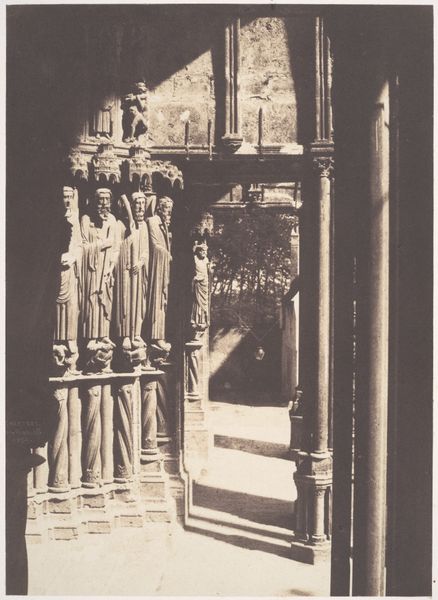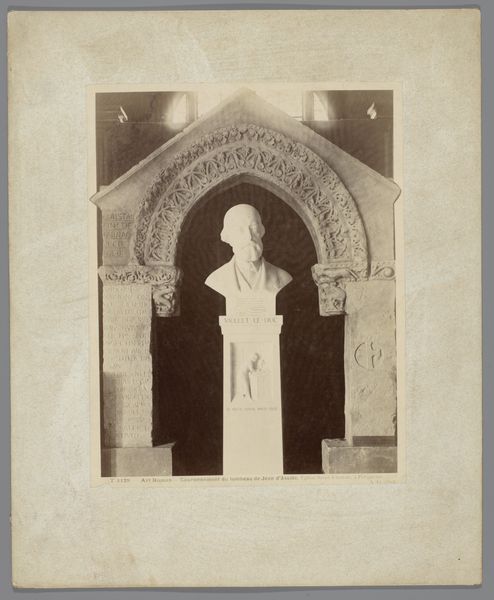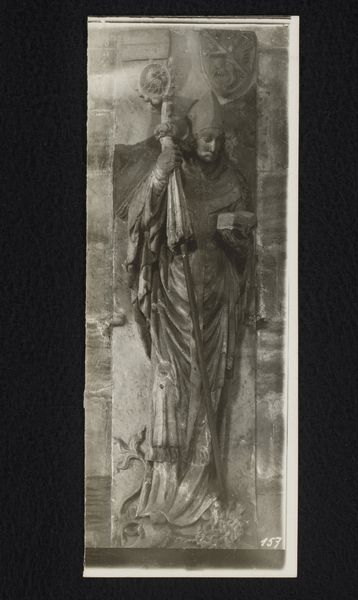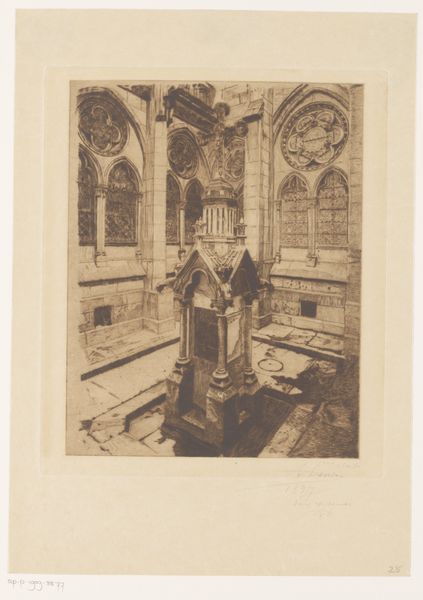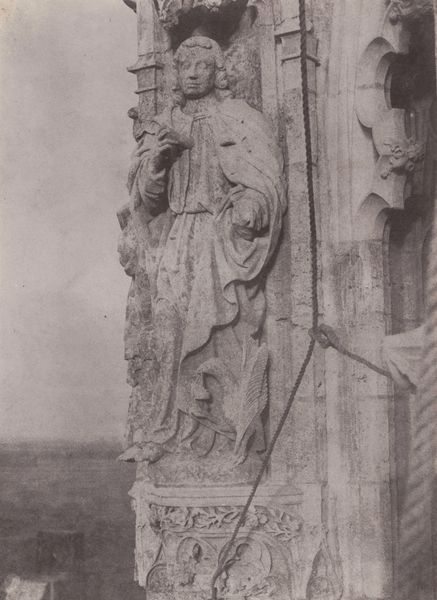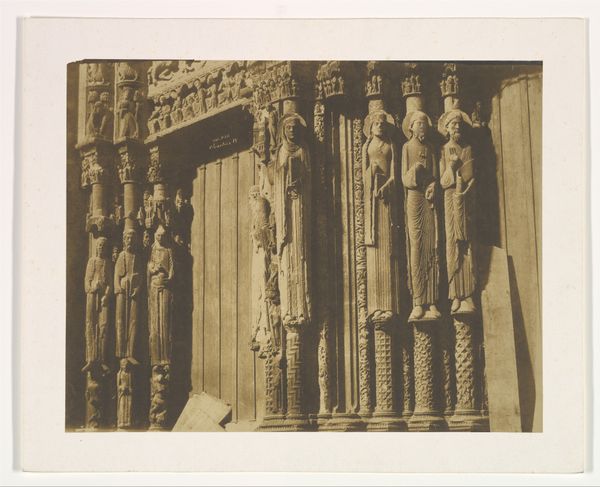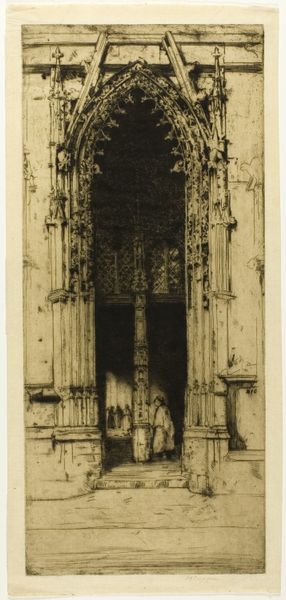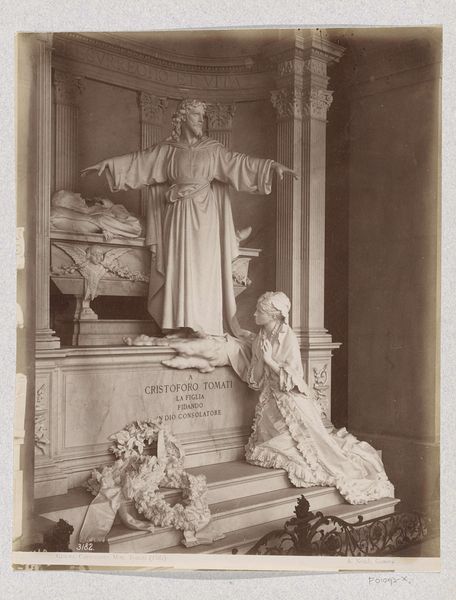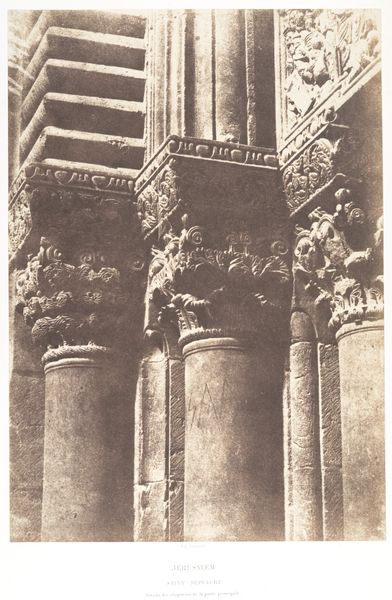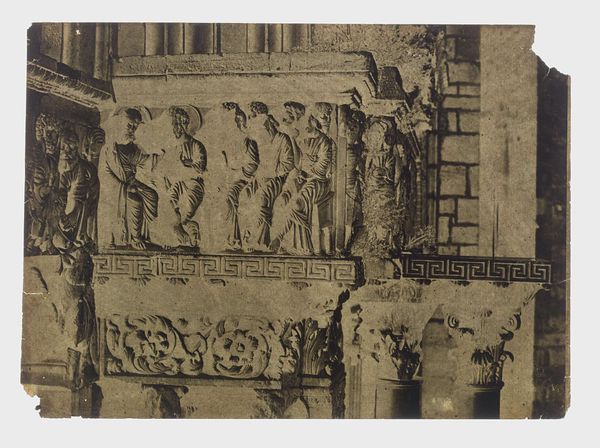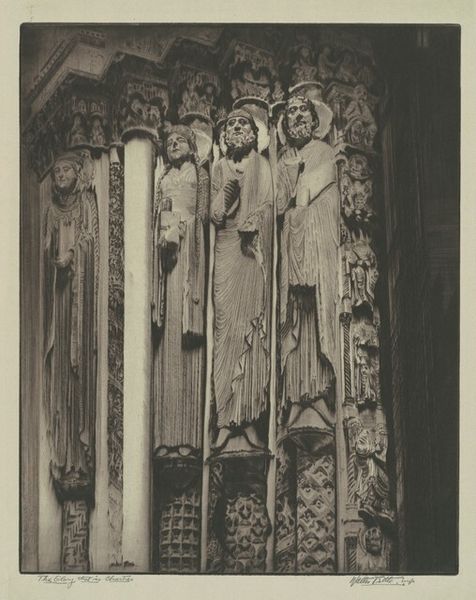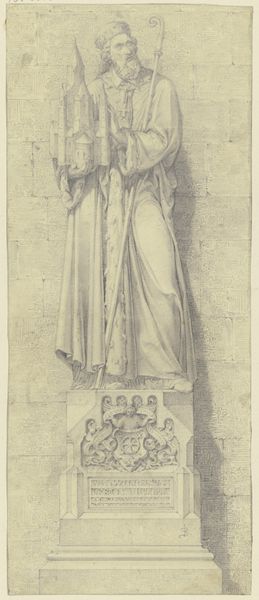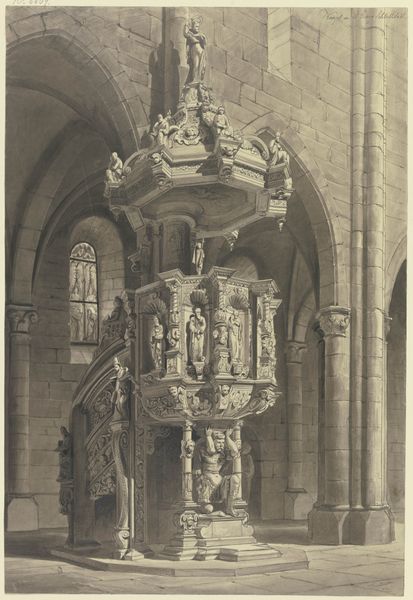
photography, sculpture, site-specific, gelatin-silver-print
#
portrait
#
photography
#
ancient-mediterranean
#
sculpture
#
site-specific
#
gelatin-silver-print
Dimensions: Sheet: 10 13/16 × 8 1/2 in. (27.4 × 21.6 cm) Image: 10 1/4 × 8 1/8 in. (26.1 × 20.6 cm)
Copyright: Public Domain
Curator: Standing before us, we have a gelatin-silver print titled "Chartres," created by Pierre Emile Joseph Pécarrère sometime between 1850 and 1852. It's currently housed at the Metropolitan Museum of Art. Editor: My first impression is how dramatically the light sculpts these figures! There’s this almost haunting contrast between the bright, exposed stone and the deep, unknowable shadows lurking around them. Curator: Absolutely. Pécarrère, a photographer operating fairly early in the medium’s history, really utilizes the gelatin-silver process to emphasize that sculptural quality. He almost seems to be reviving them. The photograph presents sculptures depicting solemn figures, most likely saints or biblical figures adorning the cathedral's facade. Editor: Which then begs the question, what does it mean to create a static image, a ‘portrait’ one could even argue, of works whose function, and perhaps very intention, is rooted in the performative spiritual work of architecture and belief? Does that separation shift their role and the role of those performing devotion? Curator: Precisely! This approach invites us to rethink temporality. He freezes something immense, enduring – yet it is not eternal but constantly shifting, always impacted by light. Photography offered a new lens through which to study these awe-inspiring forms. It lets you bring the sublime down to human size, something tactile. Editor: It makes me think of accessibility. Before photography, these monuments, visually and culturally, remained largely within the domain of the privileged classes and their associated institutions. Here we witness an important shift, making these icons more democratic through accessible photographic representation. Curator: Right, it brings questions of access and privilege and places them in stark relief. These statues, while seemingly static in the photo, represent stories and hierarchies—often fraught and conflicted. This photo subtly questions and, through its distribution, democratizes them. Editor: Well, thinking of the social and religious roles ascribed to each of the figures represented I now cannot but think of it also as a snapshot of class dynamics during a period of incredible change and societal shifts in France. Curator: Yes, and to make it even richer, you could meditate on what's just outside the frame… what’s excluded from the shot. I’d really need more than a minute or two… Editor: Agreed. A lifetime, perhaps, to grasp even a fraction of it.
Comments
No comments
Be the first to comment and join the conversation on the ultimate creative platform.
